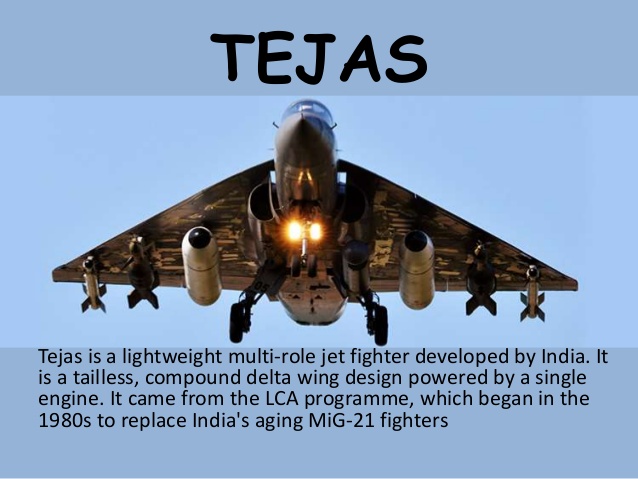
Concerned about the price for an indigenous fighter jet, which the government has been keen to promote under Make in India scheme, the committee set up by the Defence Ministry will look into the pricing of military equipment manufactured by defence PSUs.
The euphoria within the defence establishment over the induction of the first indigenous Light Combat Aircraft into the IAF appears to have subsided with the Defence Ministry forming a committee to look into the “high price” demanded by Bengaluru-based public sector manufacturer, Hindustan Aeronautics Limited (HAL), for Tejas Mark1A.
Sources told newsmen that in response to a request for a proposal for 83 Tejas Mark1A fighter jets issued by the IAF in December last year, HAL quoted a price of Rs 463 crore per jet in April. This raised eyebrows in the government, sources said, as the price compared unfavourably even with more modern foreign fighters. “The HAL supplies the more modern Russian Sukhoi fighter, which it assembles at Nashik, at Rs 415 crore. The Russians supply it at Rs 330 crore. The Swedish Gripen was offered to us for Rs 455 crore, and F-16 for Rs 380 crore, and both were to be made in India. The HAL itself gave us Tejas Mark1 at Rs 100 crore less. This price for an improved version seems high,” sources said.

Concerned about the price for an indigenous fighter jet, which the government has been keen to promote under Make in India scheme, the committee set up by the Defence Ministry will look into the pricing of military equipment manufactured by defence PSUs. The committee is headed by Principal Advisor (Cost) in the ministry and is likely to submit its report in the next few weeks.
Once the committee submits its report, the ministry will form a commercial negotiations committee (CNC) to bring down HAL’s price for the jet. The contract for 83 jets, sources said, will take another year before it is finally signed.
According to sources, the Defence Ministry is also concerned about the delay in supply of the existing order of the first lot of 40 Tejas fighter jets. In last three years, only nine fighter jets in Initial Operational Clearance (IOC) mode were supplied against an order of 20. The order for another 20 Tejas jets in Final Operational Clearance (FOC) has not even begun, as the FOC has not yet been attained by the aircraft. The ministry has also agreed that the HAL will supply eight trainer aircraft out of 40, after the 36 Tejas Mark1 have been supplied. “The idea was that HAL will produce 18 Tejas fighters every year. That is the only way we can provide IAF to make up its numbers as its older fighters go out of service. But there has been a delay and we are in touch with HAL about it,” sources said.
The ministry had also asked IAF about allegations that it had made constant changes in ASQR (Air Staff Quality Requirements), which could have led to the delay. They found that there have been no changes in the ASQR of Tejas Mark1A, since it was first formalised in 2014. Even in the case of Tejas Mark1, the IAF had given 135 concessions on the ASQR to HAL.
“We were somewhat surprised to learn that contrary to the impression, there have been no changes in the requirements given by the IAF, except for items which had reached obsolescence. Mark1 had no Electronic Warfare capability and before Mark2 could be produced, Mark1A is meant to fill up that gap. Those were not additional requirements added later, but formulated in 2014 itself when HAL offered Mark1A,” sources explained.
The problem, sources said, are mainly of coordination and ownership of the Tejas project between the HAL, IAF and Aeronautical Development Authority (ADA). Borrowing from the successful Navy model of indigenous defence production, ministry is now asking for a senior member of IAF on the board of HAL for greater coordination.
The Tejas indigenous fighter project was first conceived in 1984, benchmarked against the Mirage2000, with a view to replace IAF’s ageing Mig21 fleet. The order for first 20 Tejas Mark1 (IOC) was placed in 2006, and the jet inducted in the IAF in 2016.



